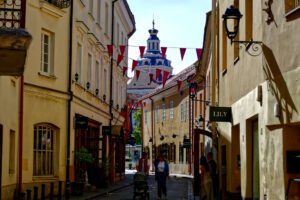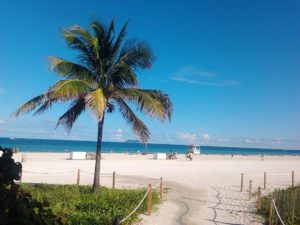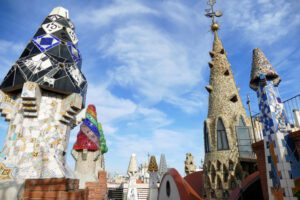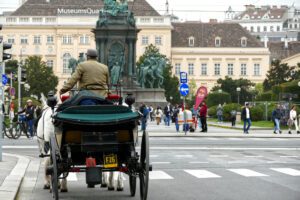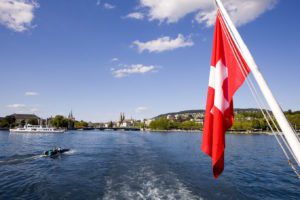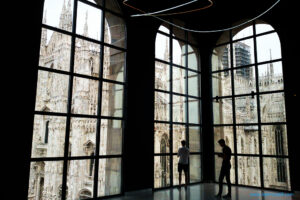Are you heading to the Atlantic coast to take on those giant waves? Or do you want to enjoy an extensive wine tasting in the vineyards and chateaux around Saint-Émilion? Whatever the reason for your visit to this region of France, you’ll hardly be able to avoid at least a pit stop in the proverbial Pearl of the Southwest. I’m talking, of course, about Bordeaux, the charming wine capital of France. And that’s a good thing, because the city is definitely worth a visit, and with my guide for up to 24 hours, you’ll be able to make the most of Bordeaux.
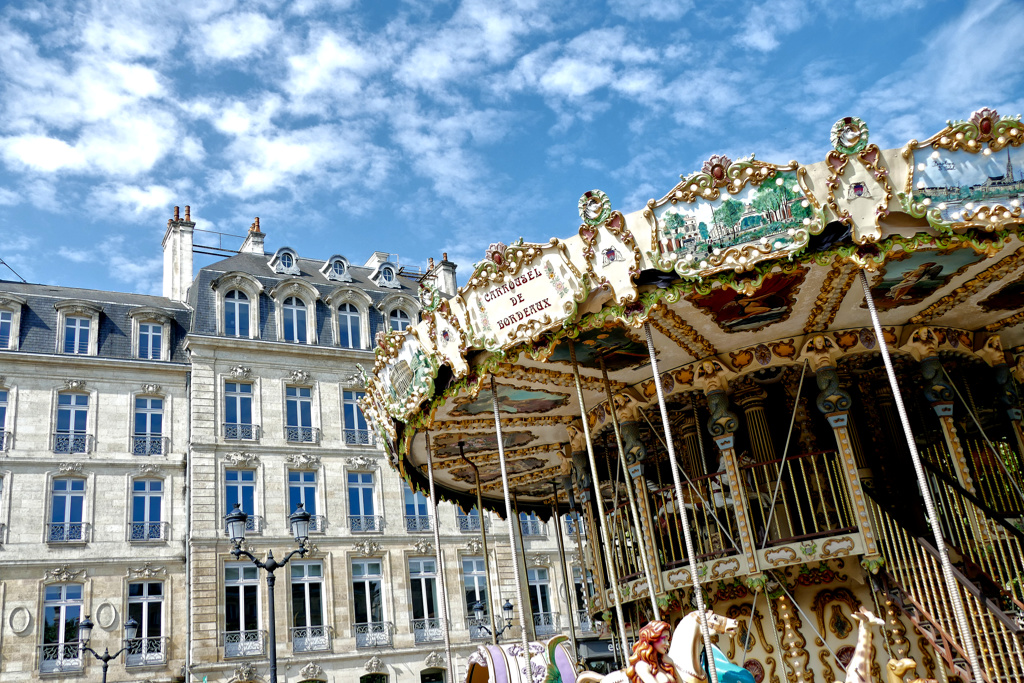
Normally, I would foresee at least two to three days in Bordeaux, even more if you really want to immerse yourself in the French savoir-vivre with leisurely strolls through the picturesque streets and plenty of breaks in cozy cafés. But sometimes, time is limited. Even more so, it should be used to its full potential, and below, you’ll find a perfectly designed itinerary.
Bienvenue à Bordeaux
The city of Bordeaux stands for fine wines, magnificent facades, and the French way of life. The city’s history stretches back over 2,000 years, when the Romans recognized the city’s potential. Thanks to its strategic location on the Garonne River, commerce flourished, and the city was an important trading center for centuries. Especially the 18th century is considered Bordeaux’s Gilded Age. The iconic neoclassical architecture still makes Bordeaux outstandingly beautiful today. The elegant Place de la Bourse is one of the most notable landmarks from this era.

However, starting in the 1990s, Bordeaux underwent a spectacular transformation. Then-mayor Alain Juppé restored the old town, banned car traffic from the city center, and installed a tram. Also, the waterfront promenade was transformed into an attractive promenade. Bordeaux became a hub for art, design, and innovation. Today, it is one of the most beautiful and livable cities in Europe. In 2007, UNESCO put Bordeaux on its list of World Heritage Sites.
Even if you spend just a couple of hours in the city, you’ll quickly understand why Bordeaux is considered the Pearl of the Southwest.
 Local Currency
Local Currency
1 €uro = 1.14 US$ as of June 2025 / current rate
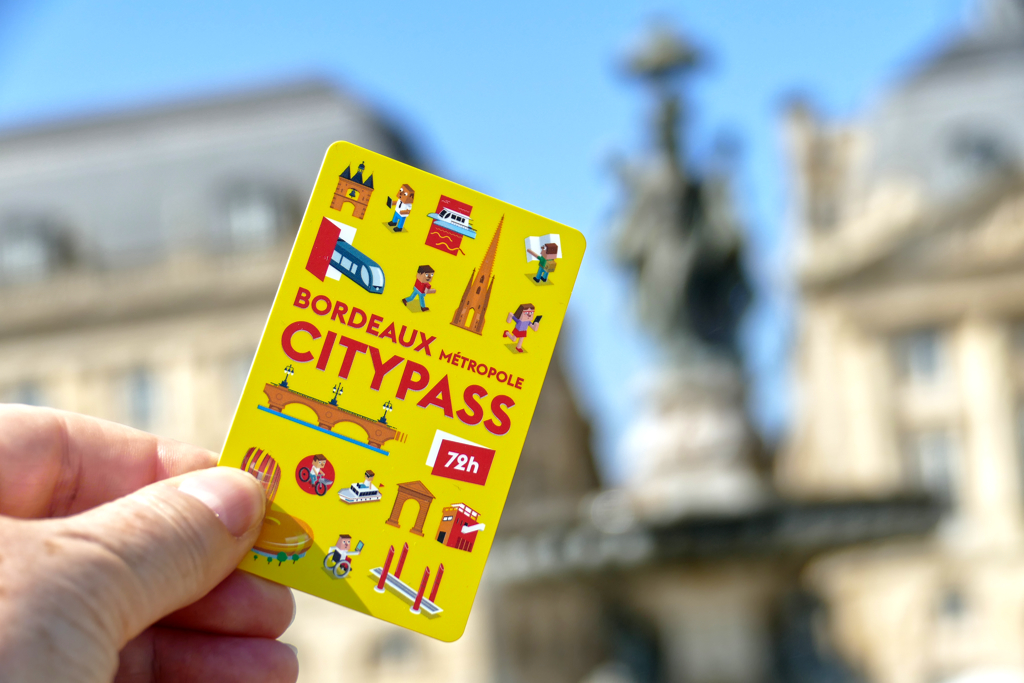
If you follow my itinerary for a rainy day, you’ll save some money by obtaining the 24-hour version of the Bordeaux CityPass** which will cost you 37 €uros, but includes all entrance fees as well as unlimited use of public transport.
 Emergency Contacts
Emergency Contacts
112 is the number you can use to access emergency services in all EU countries and many other countries in Europe and worldwide.
 National Airline
National Airline
Although Air France is the national airline, Bordeaux’s airport is primarily served by low-cost carriers like the Spanish airline Volotea. Flights with major airlines usually require a transfer in Paris or Amsterdam.
 Airports
Airports
Bordeaux-Merignac Airport / IATA-Code: BOD
 Tourist Info Online and Onsite
Tourist Info Online and Onsite
Office de Tourisme et des Congrès de Bordeaux Métropole
12 Cours du 30 Juillet
33000 Bordeaux
They are open every day from 9 a.m. to 6 p.m., Sundays they close at 5 p.m.
 Getting Downtown and Back
Getting Downtown and Back
Tram line A takes you to and from the airport. It runs at short intervals and stops at many key points throughout the city.

However, above all, it costs only an incredible 1.90 €uros. Despite this convenience, you should plan on about an hour’s travel time.
With a few exceptions, you can easily visit all the landmarks and squares listed in this post by walking. Nevertheless, if you happen to visit Bordeaux on a rainy day, you might opt for a 24-hour pass for only 6.50 €uros. This, however, is included in the Bordeaux CityPass**.
 Morning Activities
Morning Activities
Since all tram lines stop at the Hôtel de Ville station, it’s the ideal location for choosing an accommodation. At the same time, it’s also one of the best starting points for sightseeing. In good weather, you can easily explore Bordeaux’s city center on foot.

On a sunny day, it’s a good idea first to get an overview. And what place could be better suited for this than the Tour Pey Berland? The isolated bell tower of the Cathédrale Saint-André stands in front of the choir on the south side. It dates back to the 15th century and is named after Bishop Pey-Berland. The 50-meter-high tower was placed in front of the cathedral, built on marshy ground, to protect it from the vibrations caused by the bells.
You can climb up for a general entrance fee of 9 €uros every day between 10 a.m. and 6 p.m. However, a visit to the Pey Berland observation deck is included in the Bordeaux CityPass**. Either way, you have to make a reservation on their website in advance.
Once you’re back on solid ground, you can begin your long stroll through this architectural gem.
Turn onto Rue Père Louis de Jabrun at the eastern edge of Place Pey Berland. From there, you can simply walk straight ahead until you reach the Cours de l’Intendance. As you stroll, make sure you not only admire the magnificent facades and peek into the small specialty shops, but also explore the charming little side streets.
Majestic Squares
To the east of the Cours de l’Intendance lies what is probably the most magnificent square in the city, the Place de la Comédie. This square is an architectural and cultural gem of the city and is surrounded by elegant buildings, cafés, and boutiques.

At its center stands the impressive Grand Théâtre. Designed by Victor Louis, it was inaugurated in 1780 and houses the Opéra National de Bordeaux and the Ballet National de Bordeaux. Directly opposite the theater is the InterContinental Bordeaux – Le Grand Hôtel*, a luxurious 5-star hotel with an impressive facade. Originally, the magnificent building was not a hotel, but rather a representative building with residential and commercial spaces, in keeping with its prestigious location.
An intriguing structure on the eastern side of the square is the Hôtel Gobineau. Thibault-Joseph de Gobineau, a Bordeaux parliamentary councilor, commissioned it from the renowned architect Victor Louis in 1789.
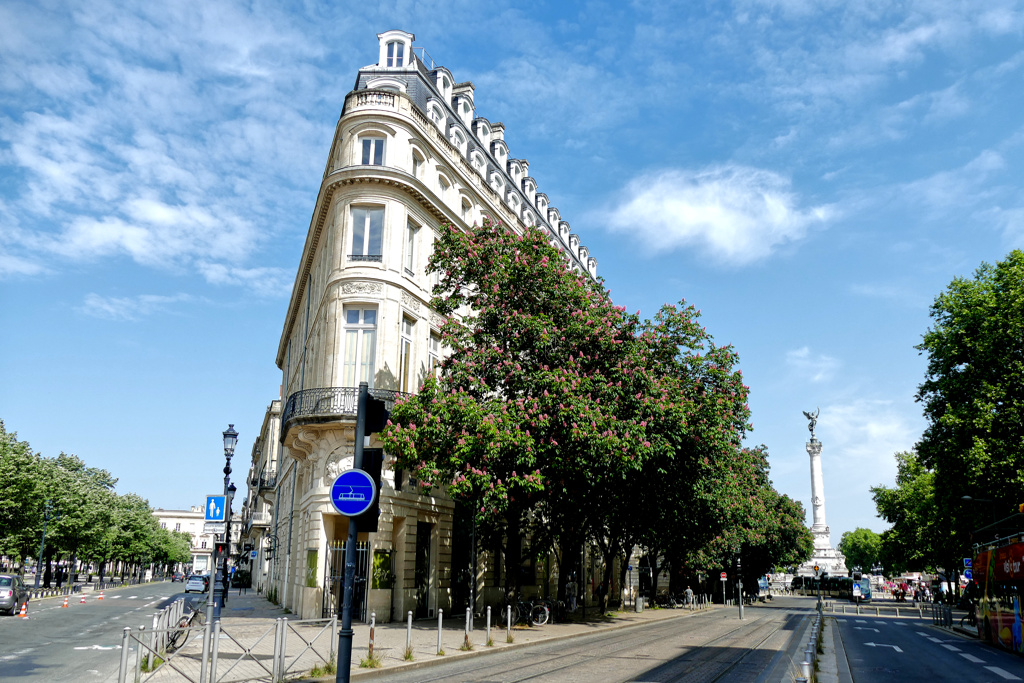
The building is characterized by its striking, ship-like shape, stylistically inspired by the Flatiron Building in New York. This shape symbolizes Bordeaux’s maritime history and its role in international trade.
The last stop of the morning walk takes you to Bordeaux’s most important square, the Place de la Quinconces.
It was created in the early 19th century on the site of the former Château Trompette and is the largest square in all of Europe!
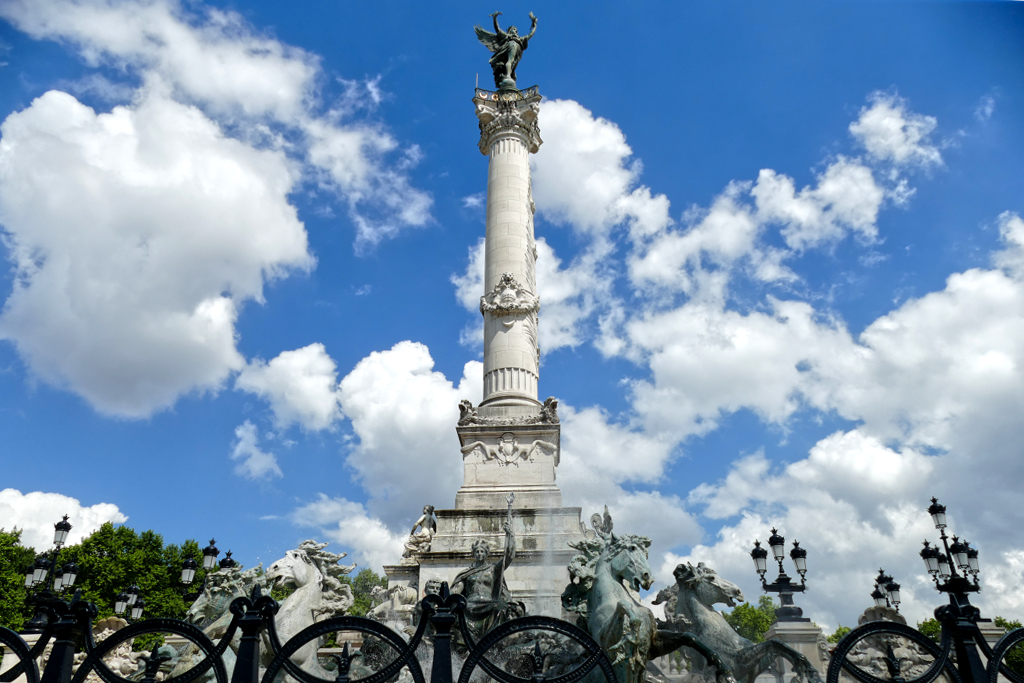
The large open space is used for events, sales promotions, and by fairground operators. On the eastern side are two magnificent columns with sculptures symbolizing trade and seafaring, and at the eastern edge stands the 43-meter-high Statue of Liberty, the Monument aux Girondins.
 Morning Activities
Morning Activities
The B-tram takes you from the stop Hôtel de Ville straight to the amazing venue Cité du Vin.

Since wine is serious business in Bordeaux, the Cité du Vin is far more than just a museum. It’s a monument to wine culture in all its diversity and depth. After all, it was this fine grape juice that brought the city fame and, above all, wealth.
The permanent exhibition covers an incredible 3,000 square meters and offers an interactive, multimedia, multisensory journey.
It covers the history of wine from ancient civilizations to modern times and the role of wine in different cultures and religions. You get to explore the geography not only around Bordeaux, but also of wine regions across the globe.

The so-called Wine Buffet of the Senses allows you to explore aromas, textures, and flavors. Hence, you don’t need to be a wine expert to enjoy the exhibitions, as the space is designed for both amateurs and connoisseurs.
Of course, your ticket also includes a glass of wine at the Belvédère, the panoramic top-floor bar, with a stunning view of the city and the Garonne. If you want to shop for wine, you can do so at their boutique, which has wines from over 80 countries in stock.
The venue is open every day from 10 a.m. to 7 p.m. and the general admission to the permanent exhibition is 22 €uros with a date-stamped ticket and 27 €uros with an open ticket. However, the visit is free with the Bordeaux CityPass**.
 Lunch
Lunch
For a classic French lunch, we head back to Place de la Comédie, either on a short walk from the Place de la Quinconces or by tram B from the Cité du Vin. On the square is a branch of the classic culinary institution L’Entrecôte. L’Entrecôte serves a single menu: steak with as many French fries as you can eat, accompanied by their traditional sauce, and a salad to start.

(Image by DuckaHouse from Pixabay)
A menu that impresses with its simplicity and even more so with its deliciousness. People are happy to queue for this. At peak times, the line stretches around the corner.
However, if you are like me and hate waiting, there’s the alternative La Côte de Boeuf, less than a ten-minute walk away behind the stock exchange. Here too: steak and fries, but unlike L’Entrecôte, you can make reservations in advance.
 Afternoon Activities
Afternoon Activities
Let’s take a relaxed approach to the sunny day and take an idyllic afternoon cruise across the Garonne.
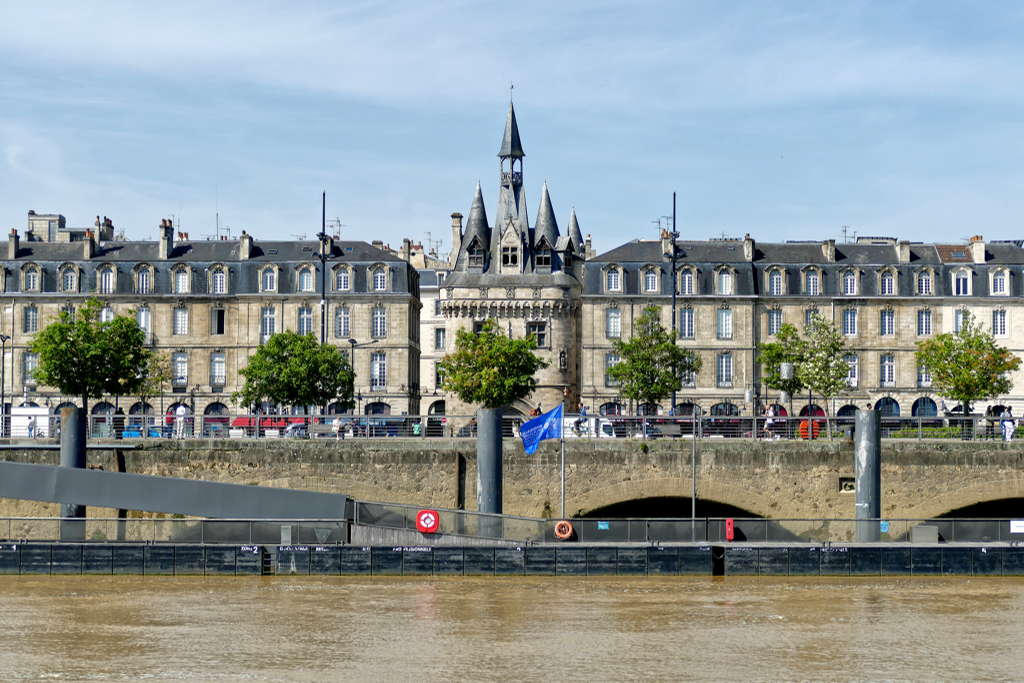
Opposite the beautiful city gate Porte Cailhau is the pier from which
excursion boats travel up and down the Garonne several times a day. The trip lasts an hour and a half and is commented on in French and English by a passionate guide.
You’ll see the magnificent buildings on the left bank and the developing right bank alike. You’ll learn a lot about the city and will realize how undervalued it actually is. The fact that the price of 17 €uros also includes a drink of your choice and a local pastry, namely, the deliciously chewy cannelé, is a charming extra.
The cruise on the Garonne is also included in the CityPass**, obviously, but here too, you have to book in advance at the tourist office.

On your journey across the Garonne, you’ll likely pass under the unique Jacques Chaban-Delmas Bridge twice. It connects the left and right banks of the Garonne, and you should take the opportunity to walk across this fantastic bridge.
To get there, simply stroll northeast from the jetty along the remodeled quays. You might be lucky and even see the bridge raised. As a matter of fact, that doesn’t happen that often.
On the Other Side
Once you’ve reached the right bank of the Garonne, you can stroll through the green strip along the river in the opposite direction until you reach the Darwin Ecosystem creative center.

Darwin Ecosystem is a pioneering project that exemplifies sustainable urban renewal. In 2011, the former Niel Barracks was converted into a multifunctional space for ecological and social innovation. Today, over 100 companies and associations have settled here. The site also includes venues for cultural events and a large skate park. Most importantly, you’ll find amazing urban art projects everywhere. To take a break, grab an artisan beer and relax in a cozy corner.
 Afternoon Activities
Afternoon Activities
The Musée d’Aquitaine is a fantastic place to learn about the regional history of Bordeaux and the Aquitaine region.
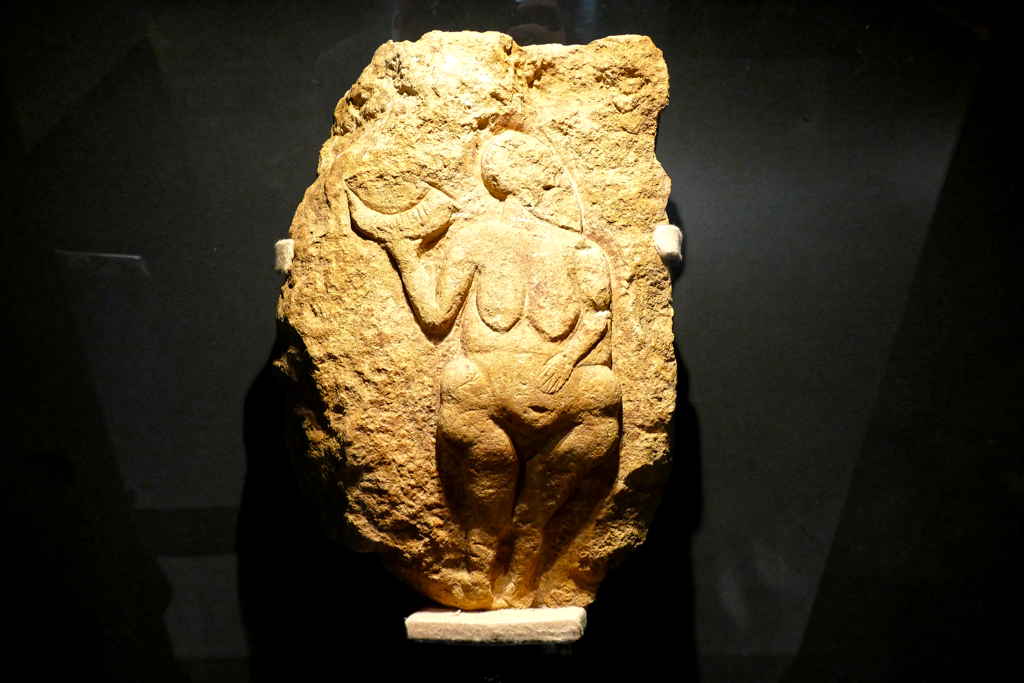
It is housed in the former Faculty of Arts and Sciences building, built at the end of the 19th century on the site of the Feuillant Convent. The B-tram takes you there from the Place de la Comédie in about ten minutes.
For an entrance fee of 5 €uros, it can be visited from Tuesday to Sunday between 11 a.m. and 6 p.m. However, admission is free with the CityPass** and on the first Sunday of the month (except July and August).
Another museum that is well worth seeing is the Musée des Beaux-Arts. To get there, take bus #16 towards Gambetta/Mériadeck right in front of the Musée d’Aquitaine. Then, get off at the stop Palais de Justice.
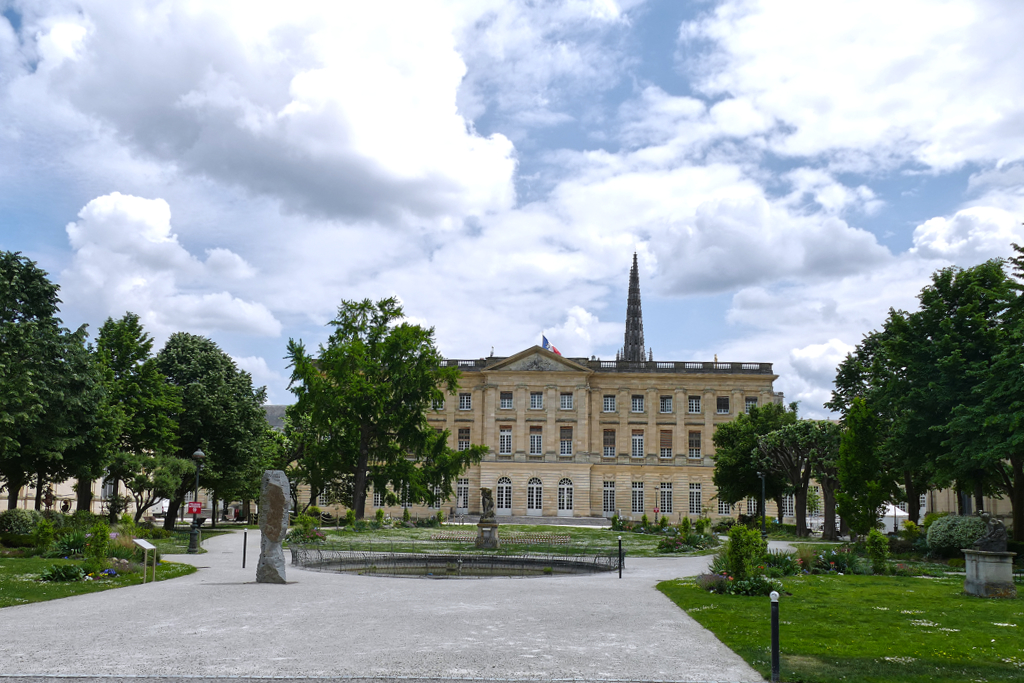
The local painter Pierre Lacour founded the Musée des Beaux-Arts in 1801. Today, it is located just behind Bordeaux’s City Hall, the Palais Rohan. Although it has a strong regional focus, spotlighting, for instance, Bordeaux-born artist Odilon Redon, it actually houses over 8000 paintings, sculptures, and drawings, including Italian and Flemish masters as well as leading French artists. The museum is open from Wednesday to Monday between 11 a.m. and 6 p.m. and the admission is 6 €uros. Obviously, it is included in the CityPass**.
 Dinner
Dinner
Just steps from the Hôtel de Ville, L’Originel is an insider’s gem, known for its cozy ambiance and exquisite cuisine.

Dinner at L’Originel is served Tuesday through Saturday evenings with a carefully curated three-course menu. The menu changes regularly according to the seasons and places great emphasis on regional ingredients.
Due to its small size and growing popularity, we strongly recommend making a reservation.
 Nightcap
Nightcap
A very short walk from the L’Originel is VITALÈS, a stylish and intimate vermuteria perfect for finishing your evening with a relaxed nightcap. Their signature vermouth is actually made in-house. Make sure to ask the staff for suggestions. Also, the vibe here is laid‑back and convivial and just perfect for winding down.
 Accommodation
Accommodation
As mentioned above, accommodation near the Hôtel de Ville stop is ideal for a 24-hour stay in Bordeaux. An excellent option is the Hôtel Cardinal Bordeaux*, a charming boutique hotel located in an elegant 18th-century mansion, just steps from the cathedral and town hall.
In addition to the tasteful decor, the experience is rounded out by the impeccable service.
However, you can check here for other suitable lodging options:
Map
This map should help you to easily find all the wonderful places I’m introducing in this post. To switch between the itineraries for a sunny and a rainy day, just open the legend at the top left corner, and you can hide or unhide the respective layer as you wish. This way, the map will show only the section you really need and be clearer.
If you have more time to spare in Bordeaux, make sure to check out my comprehensive post What Not to Miss in BORDEAUX, the Charming Wine Capital of France. There you’ll find lots of places and activities to choose from. Art aficionados will find in-depth info on Bordeaux’s urban art in my posts BORDEAUX: Best Street Art on the Left Bank of the Garonne and BORDEAUX: Best Street Art on the Right Bank of the Garonne.
Pinnable Pictures
If you choose to pin this post for later, please use one of these pictures:
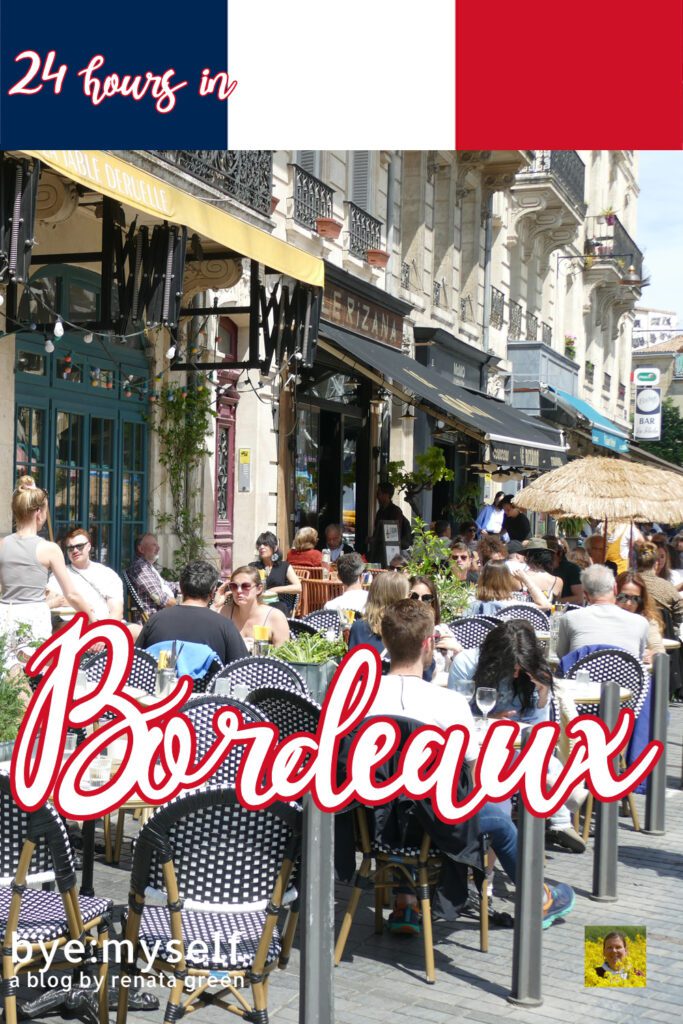
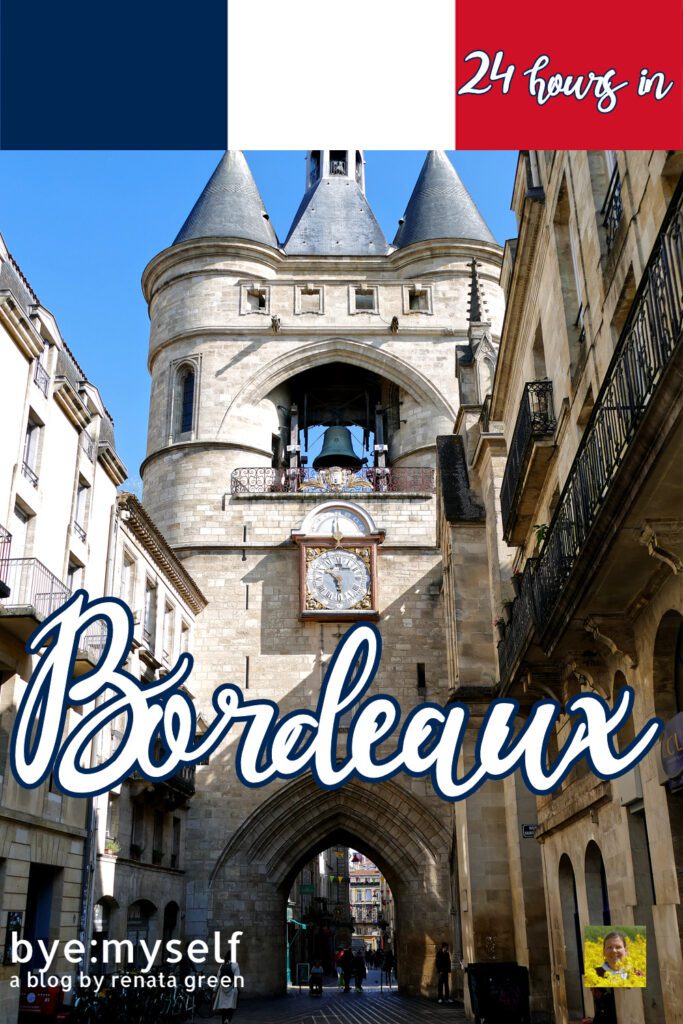
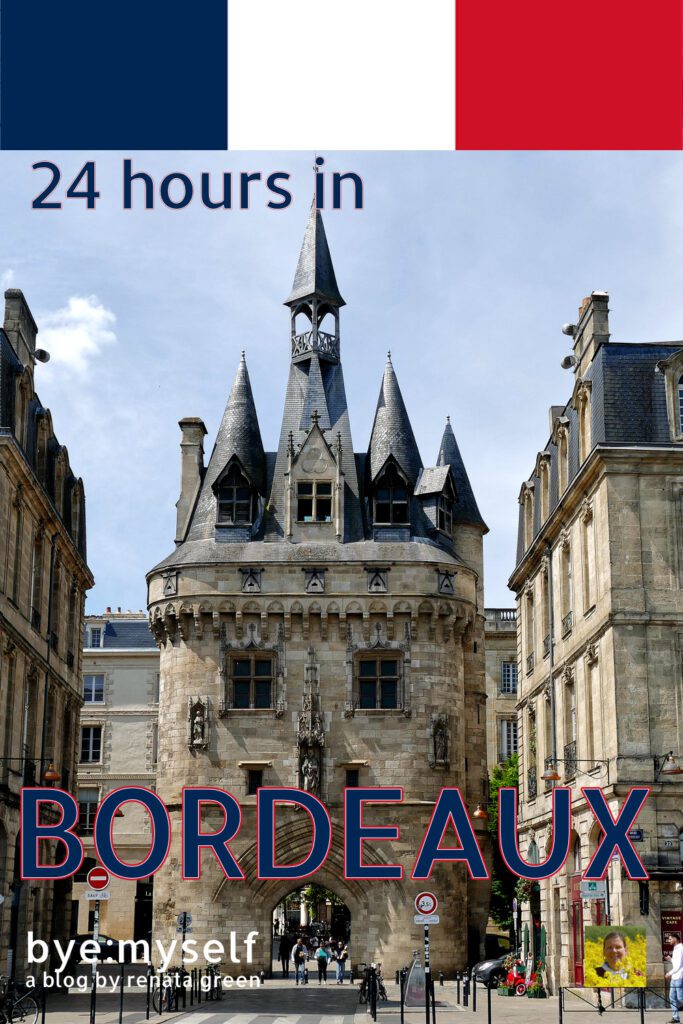
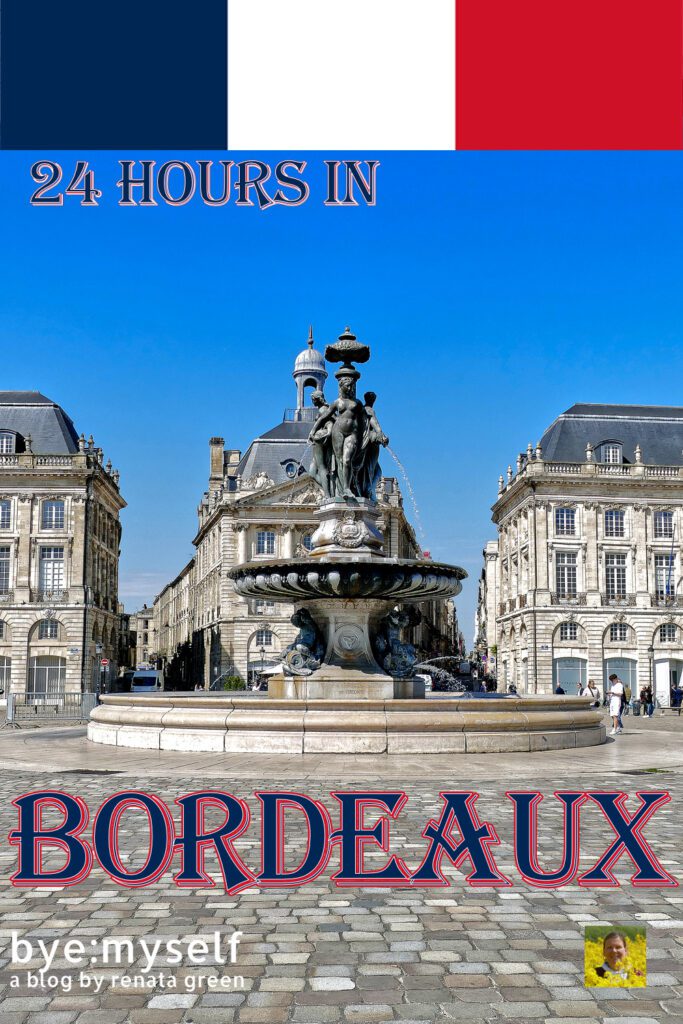
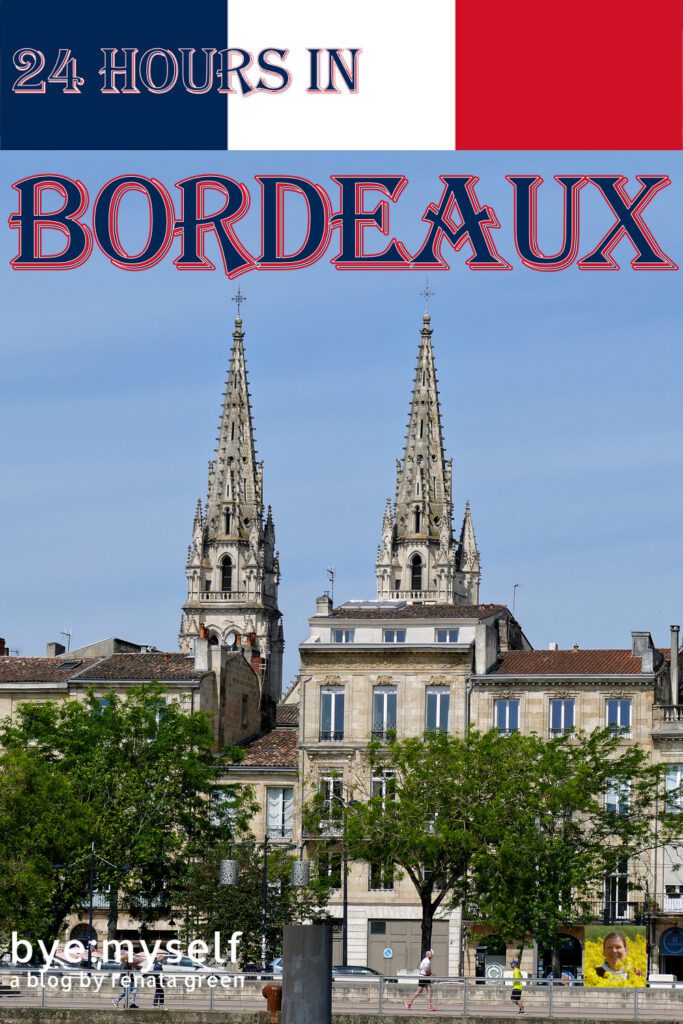
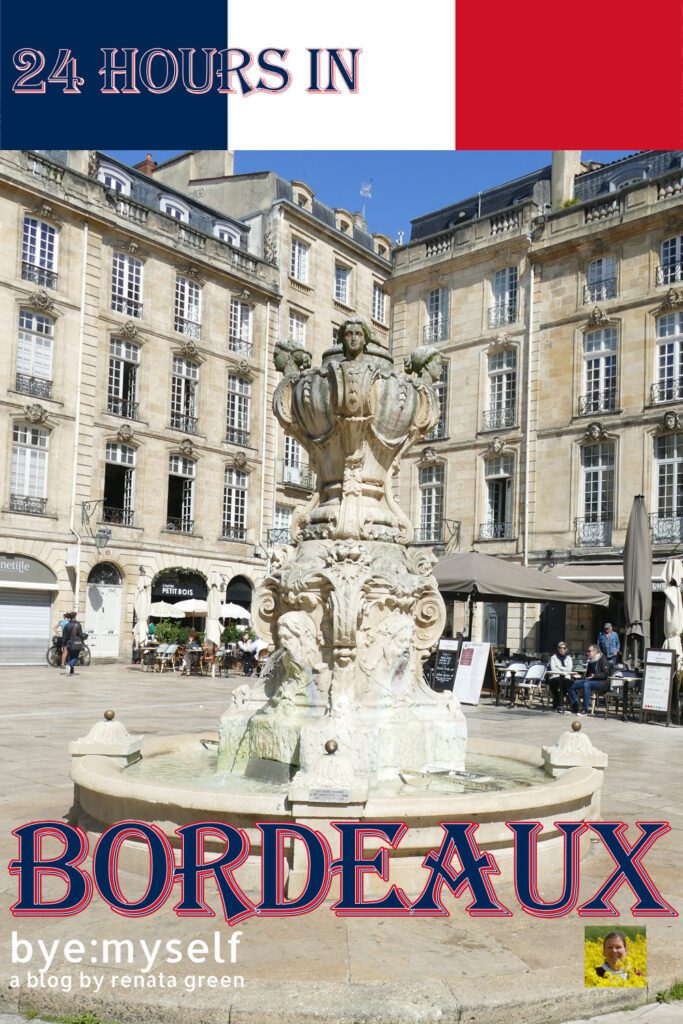
Did You Enjoy This Post? Then You Might Also Like These:
24 hours in VILNIUS
24 hours in MIAMI
24 hours in BARCELONA
24 hours in VIENNA
24 hours in ZURICH
24 hours in MILAN
24 hours in AMSTERDAM
24 hours in BANGKOK
Disclaimer: *This is an affiliate link. If you book through this page, not only do you get the best deal. I also get a small commission that helps me run this blog. Thank you so much for supporting me!
**The Office de Tourisme et des Congrès de Bordeaux supported my blogger trip by supplying me with a 72-hour CityPass. However, all opinions on these services are mine and weren’t by any means influenced by my cooperation partner.
Icons: money bag by Roundicons from www.flaticon.com, police car, train, sun, glass, and bed by Freepik from www.flaticon.com, takeoff plane and board made by ultimatearm from www.flaticon.com, info made by Roundicons from www.flaticon.com, umbrella made by Kiranshastry from www.flaticon.com, food plate by Vectors Market from www.flaticon.com
